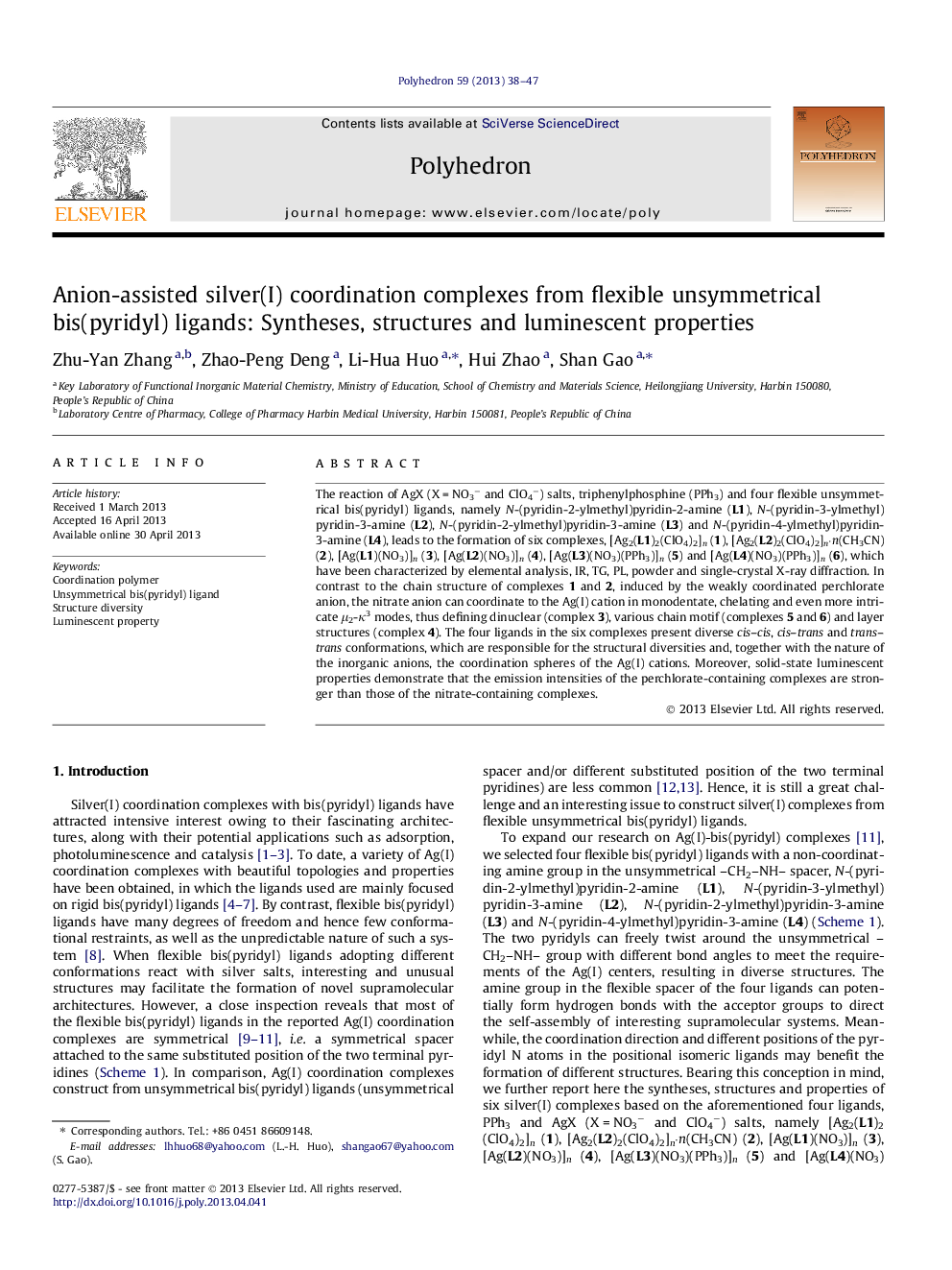| Article ID | Journal | Published Year | Pages | File Type |
|---|---|---|---|---|
| 1335737 | Polyhedron | 2013 | 10 Pages |
The reaction of AgX (X = NO3− and ClO4−) salts, triphenylphosphine (PPh3) and four flexible unsymmetrical bis(pyridyl) ligands, namely N-(pyridin-2-ylmethyl)pyridin-2-amine (L1), N-(pyridin-3-ylmethyl)pyridin-3-amine (L2), N-(pyridin-2-ylmethyl)pyridin-3-amine (L3) and N-(pyridin-4-ylmethyl)pyridin-3-amine (L4), leads to the formation of six complexes, [Ag2(L1)2(ClO4)2]n (1), [Ag2(L2)2(ClO4)2]n·n(CH3CN) (2), [Ag(L1)(NO3)]n (3), [Ag(L2)(NO3)]n (4), [Ag(L3)(NO3)(PPh3)]n (5) and [Ag(L4)(NO3)(PPh3)]n (6), which have been characterized by elemental analysis, IR, TG, PL, powder and single-crystal X-ray diffraction. In contrast to the chain structure of complexes 1 and 2, induced by the weakly coordinated perchlorate anion, the nitrate anion can coordinate to the Ag(I) cation in monodentate, chelating and even more intricate μ2-κ3 modes, thus defining dinuclear (complex 3), various chain motif (complexes 5 and 6) and layer structures (complex 4). The four ligands in the six complexes present diverse cis–cis, cis–trans and trans–trans conformations, which are responsible for the structural diversities and, together with the nature of the inorganic anions, the coordination spheres of the Ag(I) cations. Moreover, solid-state luminescent properties demonstrate that the emission intensities of the perchlorate-containing complexes are stronger than those of the nitrate-containing complexes.
Graphical abstractSix silver(I) complexes based on four flexible unsymmetrical bis(pyridyl) ligands have been synthesized and characterized, exhibiting macrometallacycle, curving, zig-zag and concavo–convex chain, double layer, as well as supramolecular host–guest architectures.Figure optionsDownload full-size imageDownload as PowerPoint slide
